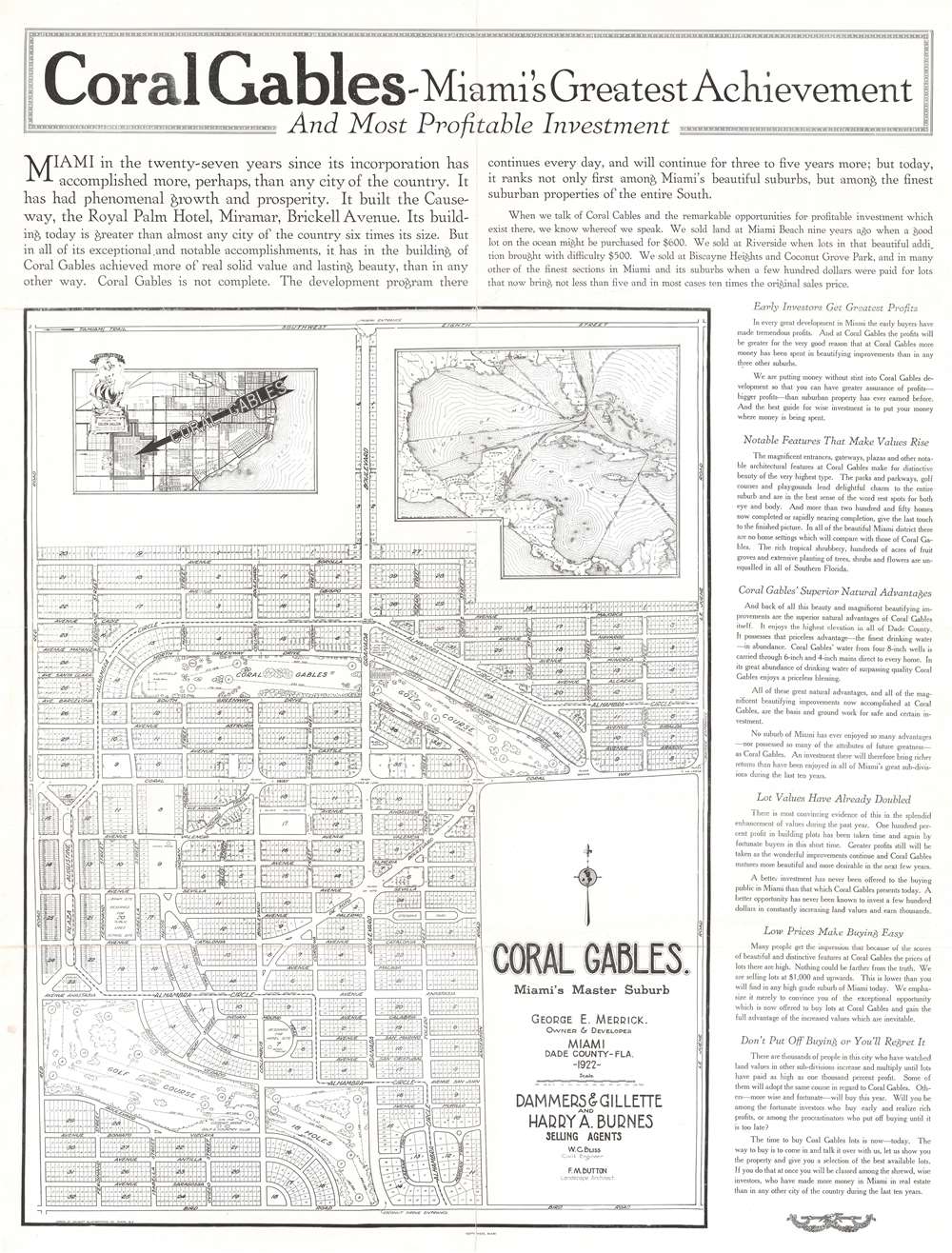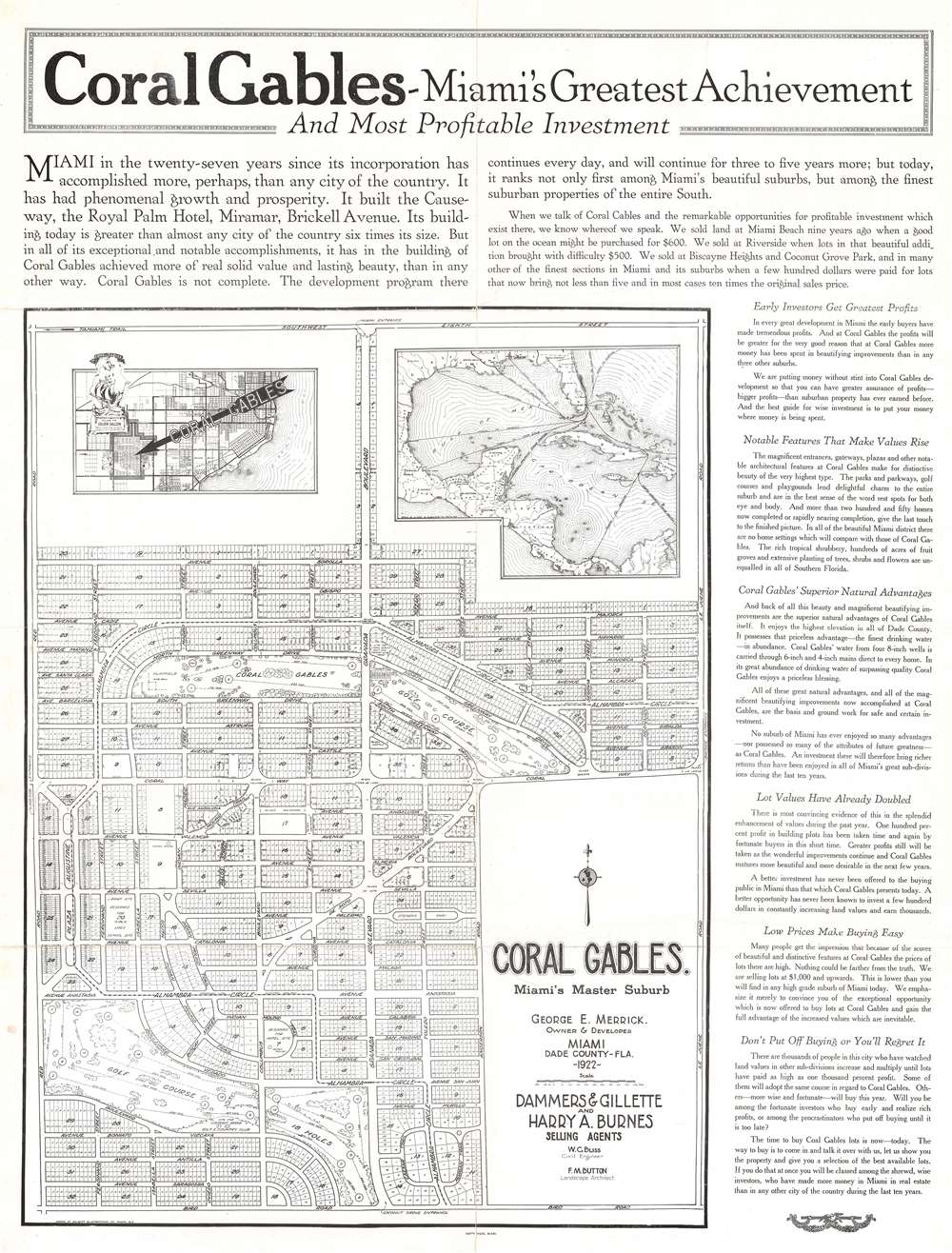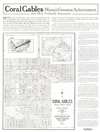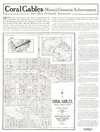This item has been sold, but you can get on the Waitlist to be notified if another example becomes available, or purchase a digital scan.
1922 W. C. Bliss FIRST Promotional Development Map of Coral Gales, Florida
CoralGables-bliss-1922
Title
1922 (dated) 31 x 23.5 in (78.74 x 59.69 cm) 1 : 6000
Description
Coral Gables
Coral Gables is a planned community located southwest of Miami, Florida. It was the brainchild of Florida lawyer and real-estate baron George Edgar Merrick. In 1911, Merrick inherited a 3000-acre citrus plantation from his father. When the Florida Land Boom reached its height in the 1920s, he embraced a grand vision to turn the plantation into a luxurious suburb in the City Beautiful ethic. He spared no expense, bringing in renowned civil engineers, architects, and landscape designers, among them Frank Morse Button and Whitney Carleton Bliss. Button and Bliss laid out the first plan for Coral Gables in 1921 and, by 1922, when this map was issued, construction and promotion were well underway. While Merrick's personal fortunes were hit hard by the hurricane of 1926 and the subsequent Great Depression, Coral Gables continued to flourish. Bliss and Button both lived out their days in the idyllic community.Florida Land Booms
In the second half of the 19th and throughout the early 20th century, Florida experienced a series of land booms and crashes. The first followed the Second Seminole War (1835 - 1842), when the government offered homesteaders who agreed to stay five years 160 acres of free land. The second boom followed the arrival of the railroads to central Florida, leading to nearly 15 years of prospered and economic growth - mostly revolving around the booming citrus industry. New settlements sprang up throughout the northern half of the state, many owned by absentee inventors who never personally visited Florida. The boom collapsed in 1894-95 when a series of historic freezes wiped out the citrus harvest. Property depreciation following the freezes allowed Henry Flagler (1830 - 1913) to develop the Florida East Coast Railway. This, and the arrival of the highway system in the 1920s, led to the third Florida land boom - represented here - from 1920 to the stock-market crash of 1929.Publication History and Census
This promotional two-sided map broadside was prepared by the Gilbert Blue Printing Company and printed by Casper Hefty of Hefty Press in Miami. The large map of Coral Gables follows the unpublished 1921 manuscript master plan compiled by Whitney Carleton Bliss and Frank Button (this plan is preserved at History Miami). Printed in 1922, this map is most likely the earliest published map of Coral Gables, predating most major development and the construction of the Biltmore Hotel.CartographerS
Whitney Carleton Bliss (February 7, 1886 - May 26, 1964) was an American Civil Engineer active in Miami, Florida, in the early 20th century. Bliss was born in Providence, Rhode Island. He was educated as a Civil Engineer and Surveyor, but it is unclear where. He married Lavina Ellen Crews (April 25, 1888 - 1891). The Bliss family relocated to Miami in 1914, presumably to take advantage of the need for civil engineers at the height of the Florida Land Boom. He surveyed and laid out development plans for multiple Miami area developments, including Star Island, Palm Island, Sunset Island, Bay Point, and Biscayne Point. He became involved with George Edgar Merrick (1886 - 1942) and in 1921, along with Frank Button (1866 - 1938), laid out the initial master plan for Coral Gables - where he was the 3rd resident. Curiously, although his name is on the earliest plans of Coral Gables, he is rarely referenced in historical studies of Coral Gables and its early development. He nonetheless, remained there for the remainder of his life. He appears in directories as a Civil Engineer until about 1940, when presumably he went into retirement. More by this mapmaker...
Frank Morse Button (August 14, 1866 - August 3, 1938) was an American landscape designer and civil engineer active in Florida in the early 20th century. Button was born in Brandon, Vermont, and in 1887 graduated from the University of Vermont with a degree in civil engineering. Button worked in the Army Corps of Engineers, a civilian arm of the army, from 1889 to 1899, and even worked on the 1893 Chicago Columbian Exposition where he laid the pilings for the facsimile battleship 'Illinois'. In 1903, he joined the landscape firm of Ossian Cole Simonds (1855 - 1931), designing the Charles Deering’s estate at Buena Vista and Chicago’s Lincoln Park. With the death of his wife, Button resigned firm the Simonds from and relocate to Miami, Florida, where form 1921, he played a key role in developing and designing Coral Gables under George Edgar Merrick (1886 - 1942). It was he who, along with civil engineer Whitney Carleton Bliss (1886 - 1964), laid out the masterplan for Coral Gables following the principles of the City Beautiful Movement. Button died tragically in a 1938 construction accident (he was hit by a truck) while planting trees on Bird Road, Coral Gables. Learn More...
George Edgar Merrick (June 3, 1886 - March 26, 1942) was a layer and Florida real estate developer best known for founding and building Coral Gables, near Miami. Merrick was born in Springdale, Pennsylvania, the son of a Congregationalist minister. His family moved to Miami in 1898, when he was 12. He studied law at Rollins College in Winter Park, Florida. When he graduated he set up a law practice in New York City. When his father died in 1911, he returned to Miami. He was appointed County Commissioner in District 1, in charge of developing the transportation infrastructure of South Florida - including the area that would become Coral Gables. He had earlier inhered some 3000 acres of citrus groves just southwest of Miami. From 1922, Merrick assembled a team and began transforming the citrus plantation into a new town following the principles of the City Beautiful Movement. This was the origins of Coral Gables. He built thousands of Mediterranean style homes, the grandiose Biltmore Hotel, expansive golf courses, and more. He is credited with Coral Gables' distinctive Spanish colonial architecture, for which he was granted the Order of Isabella the Catholic by King Alfonso XII of Spain. In 1925, he established the University of Miami in Coral Gables, donating some 600 acres of land and endowing it with five million dollars. The Great Depression ended the Florida Land Boom and hit Merrick's interests hard. By 1928, he was steeped in debt and forced out of management of Coral Gables. He retired to Upper Matecumbe Key, where he opened his Caribee Club. Further misfortune hit in 1935, when the Labor Day Hurricane destroyed all of his assets there. He never recovered and died in Miami in 1942. Learn More...
Caspar Hefty (July 27, 1879 - May 3, 1935) was a Miami, Florida based printer active in the early 20th century. Caspar was born in Tory, Illinois and moved to Miami, Florida in 1904. When he arrived he took a position as a linotype operator at the daily newspaper Miami Metropolis, predecessor of the Miami Daily News. Several years later he founded Hefty Press, one of Miami's first commercial job printers. He was a Miami City Council man from 1911 to 1912 and president of the Miami City Council from 1915 - 1917. Hefty printed some o the earliest plans and maps of Miami area developments, including Coral Gables. He died after a long illness in May 1935, he was 58. Learn More...






